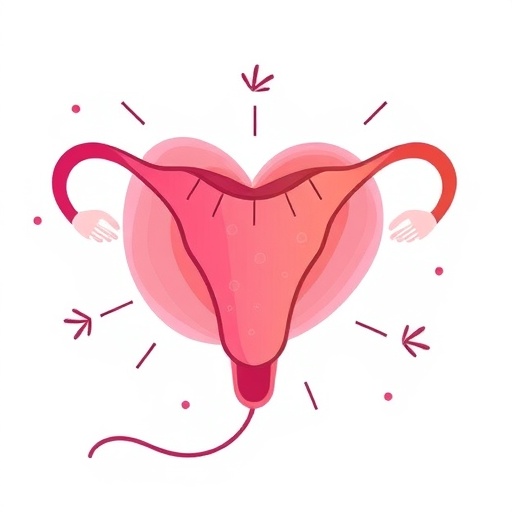PHILADELPHIA – In an effort to improve stroke recognition and reduce life-threatening pre-hospital delays worldwide, an international team lead by researchers at Penn Medicine created a universal stroke awareness program, Stroke 112. This week, the team published encouraging results in Stroke, the journal of the American Stroke Association, about the program's acceptance in a non-English-speaking environment.
Stroke is the second leading cause of death worldwide and studies point to non-English speaking countries and regions having higher mortality and disability rates. This is partly due to delays in recognizing stroke occurrences, which hampers prompt emergency treatment. In the United States, the acronym FAST (Face, Arm, Speech, and Time) is used to help people recognize stroke symptoms and get stroke victims to a hospital quickly. However, the acronym does not translate well for non-English-speaking countries and regions, as it is difficult to remember the foreign language characters and their related meaning.
To overcome language barriers, Renyu Liu, MD, PhD, an associate professor of Anesthesiology and Critical Care and a Center of Penn Global Health Scholar at the University of Pennsylvania Perelman School of Medicine, developed Stroke 112, which utilizes the universal emergency phone number: 112. Globally, there are about 80 countries and regions using 112 as the universal emergency phone number. Stroke 112 contains the emergency number to call, and similar to FAST, in Stroke 112, each number corresponds with a warning sign: 1 uneven face (crooked mouth), 1 weak arm (arm weakness), and 2 incoherent lips (slurred speech).
The researchers selected Taiwan as a non-English speaking region to test the acceptance of this simple, but potentially powerful, life-saving tool. Additionally, FAST has been used to educate people in Taiwan for fast stroke recognition for many years. The research team translated Stroke 112 into traditional Chinese and compared it to the Chinese translation of FAST through an initial online survey in Taiwan in August of 2017. In addition to gathering general demographic information–age, gender, and whether the responder was a medical professional–the survey asked which stroke educational program could be most easily remembered by people in Taiwan.
The Stroke 112 program was officially released to the public by the Stroke Treatment and Research Society of Taiwan in March of 2018, along with an educational video about Stroke 112 in Chinese. Two weeks later, the same survey was distributed electronically through social media and by a registered email list from the Taiwan Stroke Treatment and Research Society.
In the first round of the survey, before the public launch, 465 individuals (122 males and 343 females) between 11 and 80 years of age, consisting of 84 medical professionals and 381 nonmedical professionals, completed the survey. Among the survey responders, more than 54 percent thought that Stroke 112 would be easier for the people in Taiwan to remember than FAST.
About six months later, after the formal introduction of Stroke 112, the survey was repeated. This time, about 67 percent thought that Stroke 112 was easier to remember compared to FAST.
Due to its higher acceptance than that of FAST, Stroke 112 could be used as the main or alternate stroke educational tool in non-English speaking environments. It could also improve stroke response times due to its direct link to an emergency phone number. Additionally, there is potential for increased international adoption of this program, as unlike FAST, the Stroke 112 strategy can be translated into almost any language. Even in some countries where 112 is not the primary emergency number, much like in the United States, a call to 112 can be redirected to the primary emergency phone number.
"Another benefit of this program is that 112 can be dialed free of charge even when a cellphone is locked or without an active service contract. Furthermore, the location of the caller can be immediately detected by the operator if the caller's phone has a Global Positioning System (GPS) function. This critical feature could help avoid significant delays in locating the caller, especially when that person has a speech problem due to stroke or the caller does not speak the local language," Liu said.
Liu and first author Jing Zhao, MD, PhD, of Minhang Branch, Zhongshan Hospital, Fudan University, created a similar program in China in 2016 called Stroke 120–in China, 120 is the specific medical emergency phone number used. The program was officially endorsed by the Chinese Stroke Association, which promoted the program nationwide and incorporated the strategy into its stroke management guidelines.
"The Stroke 120 program is now well established across China and with the high acceptance of Stoke 112 in Taiwan, we're looking to provide versions of Stroke 112 in other languages," Liu said. Liu and his research team are now working with international experts to promote Stroke 112 worldwide.
###
Additional researchers include Maryellen Eckenhoff, PhD, of Penn and Wei-Zen Sun, MD, of National Taiwan University Medical School.
The original study was funded by the Shanghai Natural Science Foundation (17dz2308400) and China Research Engagement Funding from the University of Pennsylvania.
Penn Medicine is one of the world's leading academic medical centers, dedicated to the related missions of medical education, biomedical research, and excellence in patient care. Penn Medicine consists of the Raymond and Ruth Perelman School of Medicine at the University of Pennsylvania (founded in 1765 as the nation's first medical school) and the University of Pennsylvania Health System, which together form a $7.8 billion enterprise.
The Perelman School of Medicine has been ranked among the top medical schools in the United States for more than 20 years, according to U.S. News & World Report's survey of research-oriented medical schools. The School is consistently among the nation's top recipients of funding from the National Institutes of Health, with $405 million awarded in the 2017 fiscal year.
The University of Pennsylvania Health System's patient care facilities include: The Hospital of the University of Pennsylvania and Penn Presbyterian Medical Center — which are recognized as one of the nation's top "Honor Roll" hospitals by U.S. News & World Report — Chester County Hospital; Lancaster General Health; Penn Medicine Princeton Health; Penn Wissahickon Hospice; and Pennsylvania Hospital – the nation's first hospital, founded in 1751. Additional affiliated inpatient care facilities and services throughout the Philadelphia region include Good Shepherd Penn Partners, a partnership between Good Shepherd Rehabilitation Network and Penn Medicine, and Princeton House Behavioral Health, a leading provider of highly skilled and compassionate behavioral healthcare.
Penn Medicine is committed to improving lives and health through a variety of community-based programs and activities. In fiscal year 2017, Penn Medicine provided $500 million to benefit our community.
Media Contact
Hannah Messinger
[email protected]
215-349-5653
@PennMedNews
http://www.uphs.upenn.edu/news/




